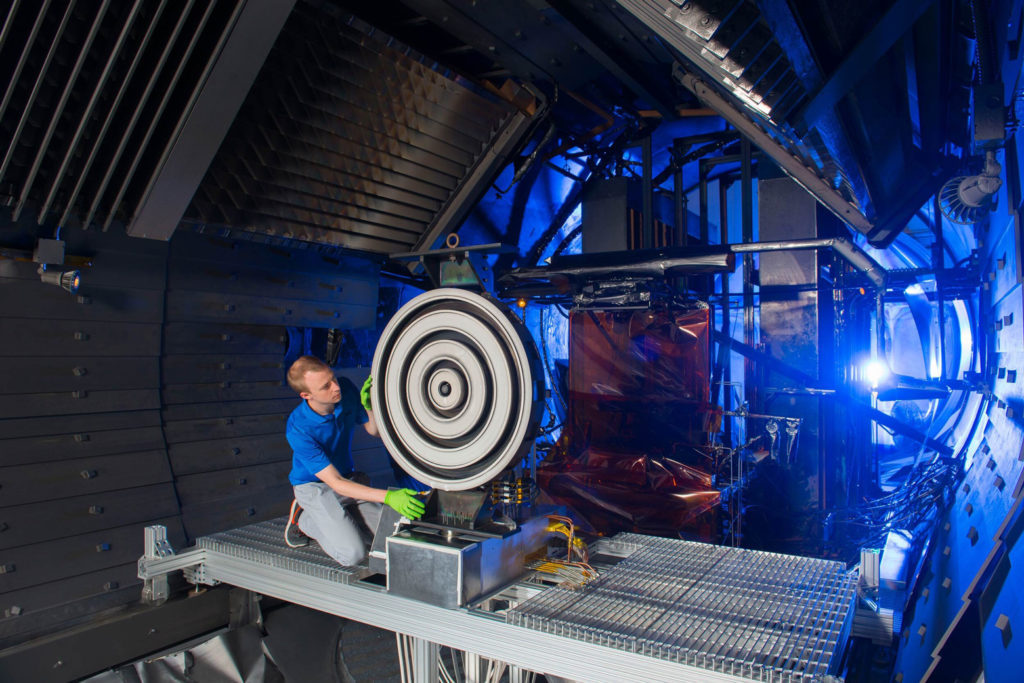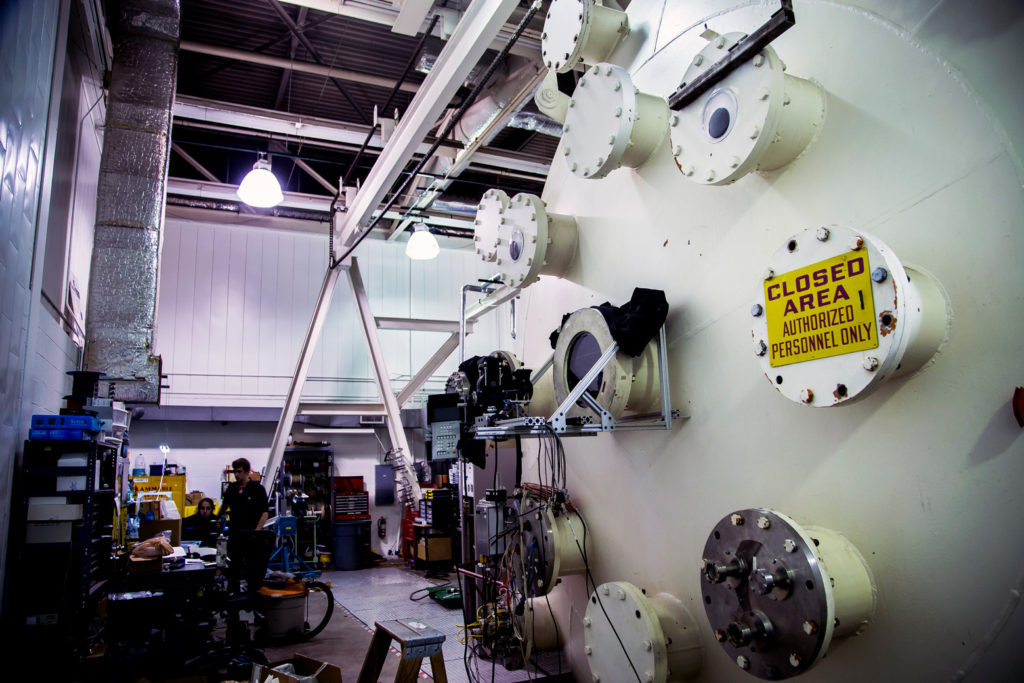
Testing advanced space engines here on Earth
U-M is a member of a new $15M institute to improve physics-based modeling of advanced thrusters for human space exploration.

U-M is a member of a new $15M institute to improve physics-based modeling of advanced thrusters for human space exploration.
EXPERTS:
University of Michigan engineers play major roles in a new $15 million NASA center that will develop better ways to test advanced space engines that could one day propel humans to the moon, Mars and beyond.
The Joint Advanced Propulsion Institute (JANUS), headquartered at Georgia Tech, is directed by U-M alumnus Mitchell Walker, a professor in the Daniel Guggenheim School of Aerospace Engineering at Georgia Tech. It is co-directed by Ben Jorns, assistant professor of aerospace engineering at U-M. Several other U-M faculty members and alumni are involved.

“We are very excited to be part of this team and are looking forward to answering the big question of how you test these next-generation thrusters. This is a critical step toward advancing this technology for deep space exploration,” Jorns said.
The institute will advance electric propulsion technologies including Hall thrusters and gridded ion thrusters.
Electric propulsion systems are extraordinarily efficient. They use energy from external power sources like the sun or nuclear reactors to ionize—or positively charge—gas fuels like xenon. The ions are then accelerated and pushed out of the thruster, driving the spacecraft to speeds that can reach 200,000 mph, NASA describes. These systems can cost less, carry more, and use up to 90% less fuel than typical chemical propulsion approaches. They are currently used in satellites and robotic missions, but NASA’s eyeing more high-powered versions for human exploration of the solar system.

U-M has long been a leader in the field through the Plasmadynamics and Electric Propulsion Laboratory (PEPL), founded in 1992 by Alec D. Gallimore, the Robert J. Vlasic Dean of Engineering, the Richard F. and Eleanor A. Towner Professor, an Arthur F. Thurnau Professor, and a professor of aerospace engineering. Gallimore and Jorns currently co-direct the lab.
Its X3 Hall thruster holds records for operating current, power and thrust. And PEPL is home to the largest vacuum test facility of its kind at any university in the nation.
But in order to continue advancing the technology, researchers need new approaches for testing the systems on Earth.
“Electric propulsion devices are intended to work in the vacuum of space,” Jorns said. “Unfortunately, even the best facilities in the world—and the test chamber at Michigan is one of the most capable—are unable to faithfully recreate a high-fidelity space-like environment.”
While one component of JANUS’s approach involves improving test facility design, the institute primarily aims to develop better physics-based models to correct for ground-based effects that don’t exist in space. These include: pressure from propellant that can’t be pumped from the chamber fast enough, electrical effects from the thruster plasma reacting with a facility’s conductive walls to generate rogue electrical pathways and currents, and contamination from plasma kicking material off facility walls and accumulating on the thruster.
Ultimately, the researchers want to be able to characterize the wear and performance of these devices in a way that’s more closely representative of how they would operate in space.
U-M researchers will be primarily responsible for studying the role of pressure and electrical effects. The institute will leverage the expertise of U-M faculty in Hall effect thrusters, gridded ion thrusters, plasma theory and diagnostics, and uncertainty quantification.
In addition to Jorns, other key contributors at U-M include: Alex Gorodetsky, an assistant professor of aerospace engineering; John Foster, professor of nuclear engineering and radiological science, and Gallimore.
“U-M faculty are poised to make seminal contributions to our understanding of pressure effects and plume dynamics. The resultant system-level models will provide the framework for extrapolating results from ground tests with finite facility pressure to the space environment,” Walker said.
Six out of the 20 co-investigators on the team are PEPL alumni.
A total of 11 universities and three other partners are involved.